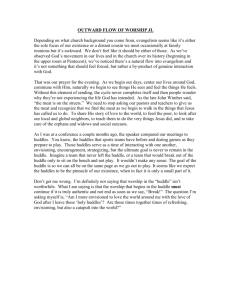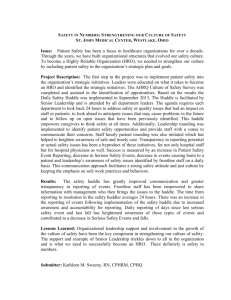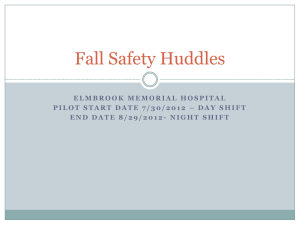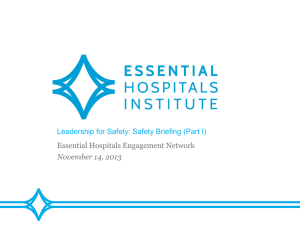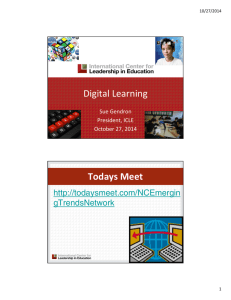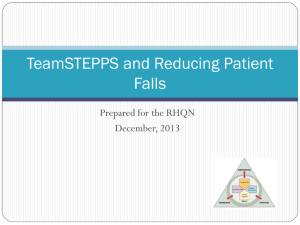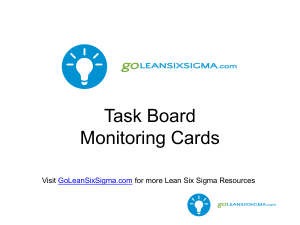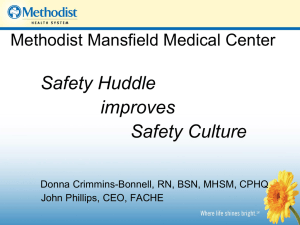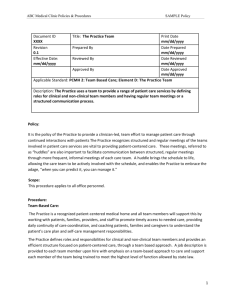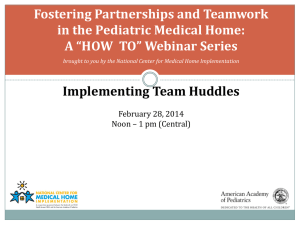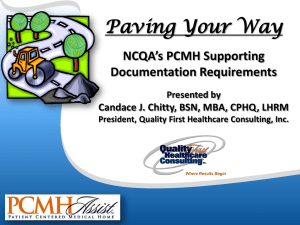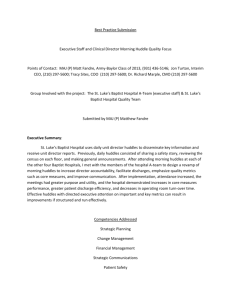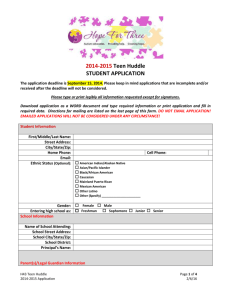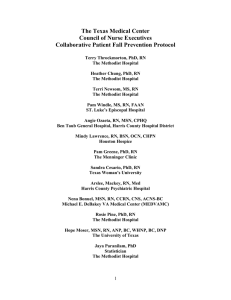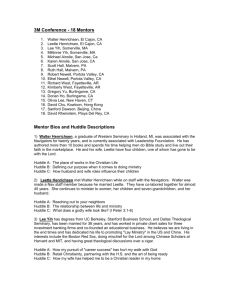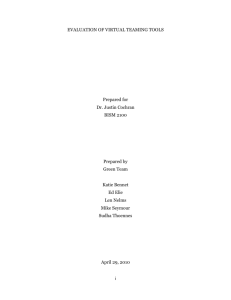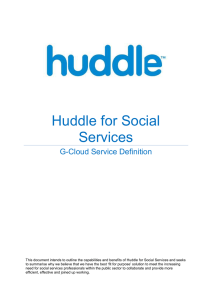Slide 1 - Colorado Academy of Family Physicians
advertisement
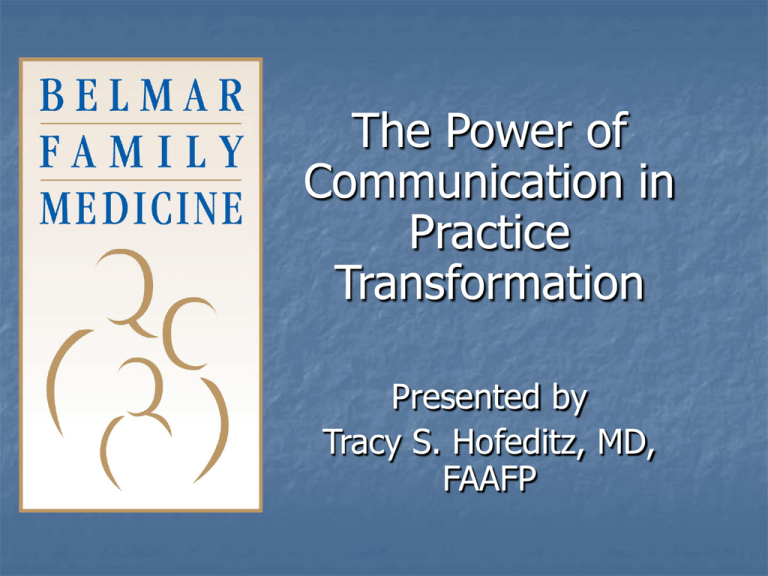
The Power of Communication in Practice Transformation Presented by Tracy S. Hofeditz, MD, FAAFP Why Better Communication is so Important Becoming a Medical Home depends on enhanced processes of communication. Team Based Care is a central paradigm of the PCMH and is dependent on healthy team communication. The application of every one of the Joint Principles depends on finding better ways to communicate. Team Huddles Anatomy of a Huddle General Rules • Daily meeting at regular times of the day • Keep huddle to < 10 minutes • • Keep huddles a predictable and consistent part of the day Try to make each huddle fun, education and something to help everyone’s day go better. NCQA Standard 3C:-The care team manages patient care in the following ways: Non-physician staff remind patients of appointments and collect information prior to appointments Non-physician staff execute standing orders for medication refills, order tests and deliver routine preventive services Non-physician staff educate patients/families about managing conditions Non-physician staff coordinate care with disease management or case management programs NCQA Standard 3D:-The physician and nonphysician staff use the following components of care management support: Conducting pre-visit planning with clinician reminders Writing individualized care plans Writing individualized treatment goals Assessing patient progress toward goals Reviewing medication lists with patients Reviewing self-monitoring results and incorporating them into the medical record at each visit Assessing barriers when patients have not met treatment goals Assessing barriers when patients have not filled, refilled or taken prescribed medications Following up when patients have not kept important appointments Reviewing longitudinal representation of patient’s historical or targeted clinical measurements Completing after-visit follow-up NCQA Standard 3E:- The practice engages in the following activities for patients who receive care in inpatient or outpatient facilities or patients who are transitioning to other care: Identifies patients who receive care in facilities Systematically sends clinical information to the facilities with patients as soon as possible Reviews information from facilities (discharge summary or ongoing updates) to determine patients who require proactive contact outside of patientinitiated visits or who are at risk for adverse outcomes Contacts patients after discharge from facilities Provides or coordinates follow-up care to patients/families who have been discharged Coordinates care with external disease management or case management organizations, as appropriate Communicates with patients/families receiving ongoing disease management or high risk case management Communicates with case managers for patients receiving ongoing disease management or high risk case management For patients transitioning to other care, develops a written transition plan in collaboration with the patient and family Aids in identifying a new primary care physician or specialists or consultants and offers ongoing consultation Problems Prior to Huddles Lack of communication Employees felt in the dark Duplication of work Tasks being completed without all available information or input from others Initial Problems With Huddle Process Rambled Wasted time Often focused on negative things Phones interrupting our meeting Uninterrupted Time Staff clock in at 8 am. Phones continue to go to the answering service until 8:30 am. First patient is on the schedule at 8:30 am. Huddle anytime between 8:10 and 8:15 am so that we can be done by 8:25 am. Solution Designed P. I. T. format P atients I nternal Appointments T asks PATIENTS Providers lead: Identify patients with special needs, or for whom they will need special assistance. Update information in the hospital log and facilitate follow-up from discharge. Focus on chronic disease patients and confirm flow sheets and self-management sheets are prepared. Scheduler often gives additional background for the purpose of the visit. INTERNAL APPOINTMENTS Practice Manager leads: Staff meetings Meetings with outside resources Training and appointments outside the office so they will know when the Practice Manager is available if they have a question or a problem to solve. Deadlines such as timesheets being turned in and tasks being completed. Discuss birthday lunch plans. TASKS Practice Manager leads: Reports new information about NextGen. Engages team in very short problem solving discussions. Deals with solutions for broken equipment such as computers, printers, faxes, etc. Clarifies or answers questions about new policies or processes. Materials Needed Schedule Hospital Log Practice Manager’s Outlook Calendar Miscellaneous handwritten notes Length of time 5-10 minutes Watch for Dysfunctions in Your Team Importance of everyone being involved and accountable, not just the leaders of the process. Leaders must create the environment for all to contribute to help all be more successful. Importance of using reports to judge progress and for setting goals. Dysfunction #1 Absence of Trust Members of teams with an absence of trust… Conceal their weaknesses Hesitate to ask for help Hesitate to provide constructive feedback Dread meetings Dysfunction #2 Fear of Conflict Teams that fear conflict… Ignore controversial topics that are critical to team success Fail to utilize input from all team members Have boring meetings Dysfunction #3 Lack of Commitment A team that fails to commit Breeds lack of focus Undermines success Revisits discussions and decisions over and over again Dysfunction #4 Avoidance of Accountability A team that avoids accountability… Creates resentment among team members Encourages mediocrity Misses deadlines Places undue burden on team leader Dysfunction #5 Inattention to Results A team not focused on results… Fails to grow or improve Loses achievement-oriented employees Encourages team members to focus on individual goals Members of high functioning teams will: Trust one another Engage in unfiltered conflict around ideas. Commit to decisions and plans of actions. Hold one another accountable for delivering against those plans. Focus on the achievement of collective results. References Lencioni, Patrick; The Five Dysfunctions of a Team http://flpbs.fmhi.usf.edu/pdfs/Five%20Dys functions%20of%20a%20Team.pdf Huddle Resources Huddle video (http://www.youtube.com/watch?v=Wttxm7jAnb4) Huddles: Improve Office Efficiency in Mere Minutes (Family Practice Management 6/07) www.aafp.org/fpm/20070600/27hudd.html The Teamlet Model of Primary Care. Annals of Family Medicine. Bodenheimer, T. (2007) (http://www.coloradoguidelines.org/pcmh/hidden/PPC%203/The%2 0Teamlet%20Model%20of%20Primary%20Care--Bodenheimer-Annals%20of%20FM--2007.pdf)
